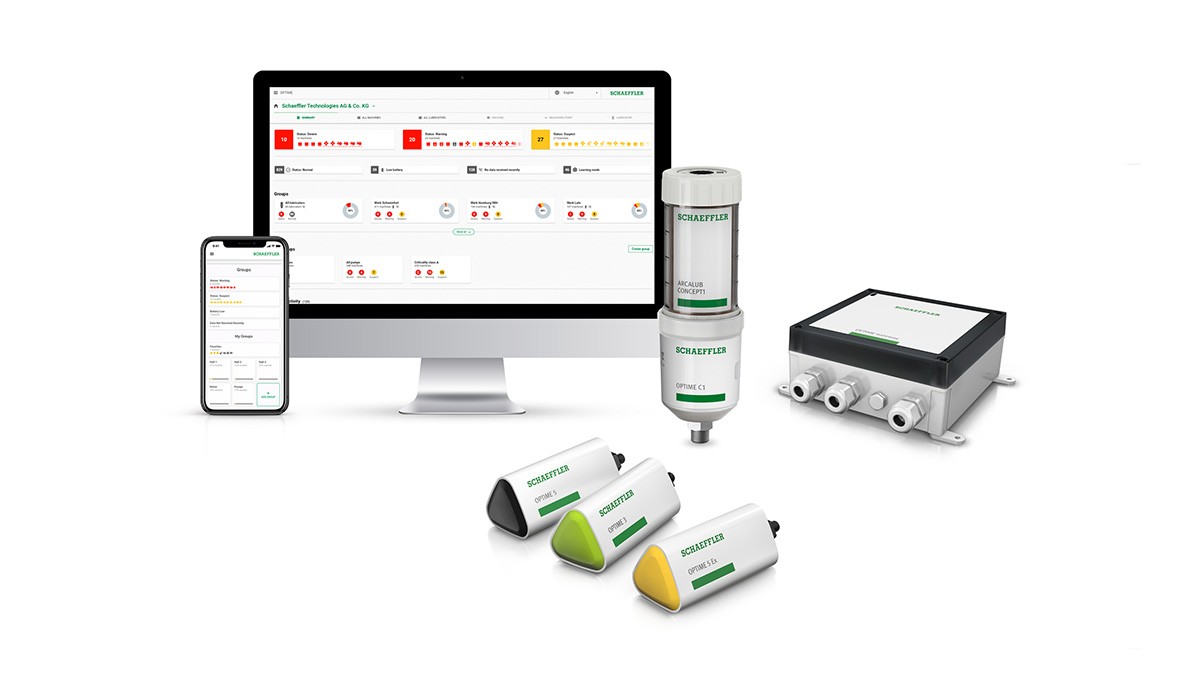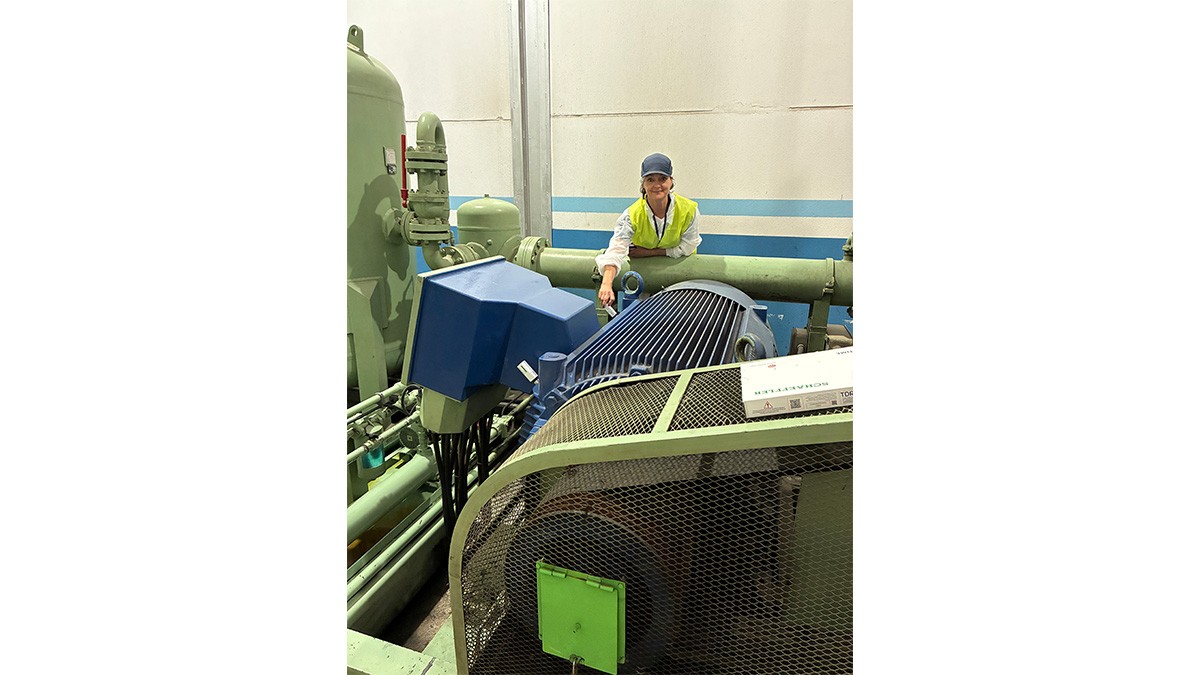Condition Monitoring
What challenges does continuous operational readiness pose for food production facilities in terms of wear and maintenance?
Marielle In de Braek:Machines used in food production are subject to heavy wear and tear. Wear and tear caus-es their performance to decline, which sooner or later leads to failures. If, for example, a pump or motor fails unexpectedly, the entire system often comes to a standstill. Such down-time not only means lost production hours, but also high follow-up costs: Employees can't work, machines stand idle, products can spoil, and every restart requires extensive cleaning. A total failure quickly leads to contamination, rejects, and significant losses. That's why it's crucial to keep a constant eye on the condition of the systems – not just when they've already come to a standstill.
How does your technology support the continuous monitoring of critical machine components?
Marielle In de Braek: We use sensors to continuously monitor the performance and condition of motors, pumps, fans, and transmissions. Deviations are detected early, trends are made visible, and poten-tial failures are predicted. This makes it possible to schedule maintenance exactly when it's needed – not too early and not too late. Unlike time-based maintenance schedules, where parts are replaced at fixed intervals, we rely on condition-based maintenance. Our OP-TIME Ecosystem was developed precisely for this purpose: It saves costs, conserves re-sources, and increases the availability of the systems.
What advantages does app-based condition monitoring offer for trouble-free 24/7 operation?
Marielle In de Braek:OPTIME sensors can be attached to all critical components. They detect vibrations, imbal-ances, knocking noises, or misalignments before they cause serious damage. That enables management to plan maintenance intervals in a targeted manner, procure spare parts in good time, and ensure that qualified personnel are available when needed. The big ad-vantage: The data can be accessed at any time via a PC or smartphone. This means that – even in difficult or dangerous environments – an on-site inspection is only necessary if the app actually reports an alarm. As a result, systems remain reliable in continuous operation.
How hygienic and retrofit-friendly are your systems for existing facilities?
Marielle In de Braek: Hygiene is essential in food and beverage production. Any interruption, whether planned or unplanned, necessitates cleaning and sterilization processes. Our condition monitoring solu-tion minimizes the number of these interventions, as faults can be detected early and recti-fied in a planned manner. The sensors themselves are fully encapsulated and have an IP69K protection rating, which is ideal for the high hygiene requirements of the industry. They're also very easy to retrofit – using adhesive pads or M6 threads – without having to modify or alter machines. That makes them particularly retrofit-friendly.
Can you give an example from the food industry that demonstrates the advantages?
Marielle In de Braek: A practical example is a pump that was crucial to the production flow. Our sensors detected an imbalance, which was displayed in the app. The maintenance team responded immedi-ately and determined that the cause was an incorrectly tightened screw on the base plate and missing plastic parts on the coupling ring. Thanks to the early warning, the pump could be monitored until the next maintenance window and then replaced in a targeted manner. Without this information, a sudden failure would most likely have occurred – with significant production losses. This example shows how condition monitoring prevents unplanned downtime and saves costs.

OPTIME Ecosystem. Copyright: ©Schaeffler Technologies
What first step would you recommend to manufacturers who want to digitalize their maintenance?
Marielle In de Braek: First, companies should identify their critical machines and determine the most important condition data. The next step is to define targets for service life and availability based on previous failures, repairs, and maintenance. Digital solutions such as OPTIME can then be introduced step by step on this basis. This gives companies three key advantages:
• First: We provide continuous transparency regarding the condition of the machines, thereby preventing unplanned downtime and consequential damage.
• Second: Maintenance can be planned in advance and spare parts ordered just-in-time, reducing storage costs and the need for improvised solutions.
• Third: Timely measures significantly extend the service life of the systems, which protects the investment in the long term.
About the Schaeffler Group
For over 75 years, the company has been advancing pioneering inventions and develop-ments in the field of motion technology. With innovative technologies, products, and ser-vices in the fields of electric mobility, CO₂-efficient powertrains, chassis solutions, and re-newable energies, the company, with around 120,000 employees, is a reliable partner for making mobility more efficient, intelligent, and sustainable. Schaeffler supplies specially de-signed track, support, and cam rollers as well as high-performance lubricants with NSF H1 approval for the food and beverage industry. In addition, the company uses simulation tools and continuous condition monitoring to ensure greater efficiency and availability of machines.
Schaeffler's intelligent OPTIME Ecosystem combines automatic condition monitoring and lubricant supply for machines and systems. It is also ideally suited for use in the food and beverage industry. The OPTIME Condition Monitoring System is based on a wireless sensor network with battery-powered vibration and temperature sensors that are attached directly to machine components such as bearings, motors, or pumps.
For additional information:
Marielle In de Braek
Global Key Account Management & Strategic Sales Lead Industrial Lifetime Solutions,
Schaeffler Technologies AG & Co. KG
Schweinfurt, Germany
E-mail:
m.indebraek@schaeffler.com
Web:
https://medias.schaeffler.de/de/industrial-automation/food-packaging




